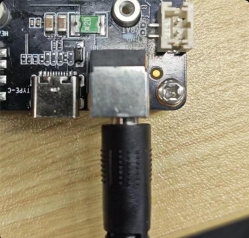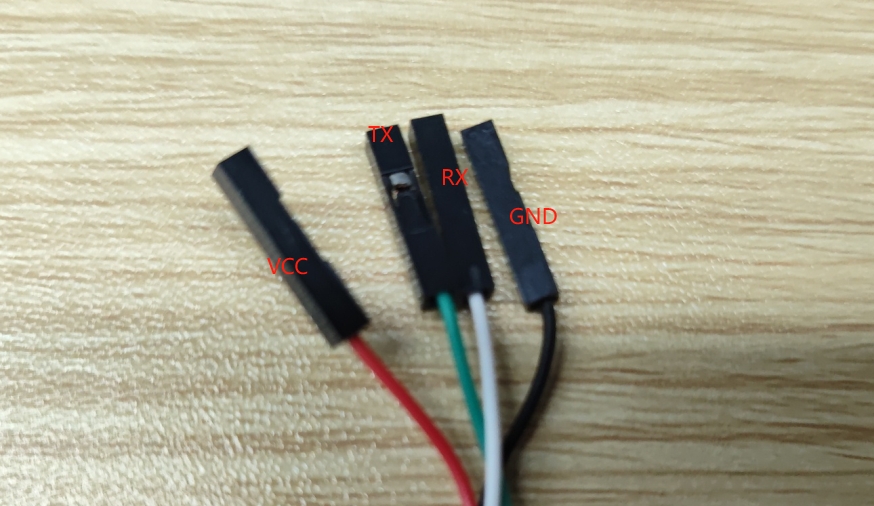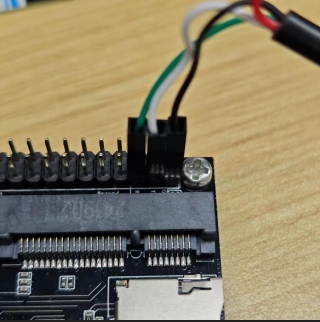02-Quick_Start_Guide
This guide is designed to help users quickly get started with the motherboard, including board power-on, display connection, debug serial port, ADB, SSH connection, and other contents.
Board Power-on
Power Supply Methods
The K5C board supports multiple power supply methods. Verify hardware version compatibility.
DC
12V
>= V1.0
Type-C
5V
>= V1.1
POE
12V
>= V1.0
BAT
> 3.7V
>= V1.2
DC Power Supply


For other power supply details, refer to K5C Board Power Supply.
LED Status
Green LED: Power indicator (steady on when powered).
Blue LED: Heartbeat indicator (blinks after kernel boot).
Troubleshooting:
No green light: Check power supply.
No blue light blinking: System malfunction.
Display
The motherboard supports LVDS screens and MIPI screens.
By default, the system is adapted for a 7-inch LVDS screen. To switch to another display, refer to Image Burning to burn the corresponding image.
Important Notes
Ensure the motherboard is powered off before connecting the screen.
Supported MIPI Screens
Model
Size
Resolution
Touch Support
AT101DS40I
10.1-inch
800x1280
Y
MX101BA1340
10.1-inch
800x1280
Y
MX080B2140
8.0-inch
800x1280
Y
F050008M01
5.0-inch
720x1280
Y
Supported LVDS Resolutions
Resolution
Touch Support
1024x600
Y
1920x1080
N
Available 7-inch LVDS Screen
Model: MX070IBC
Hardware Connection
When connecting the screen’s FPC flex cable:
Blue side must face up.
White side must face down.
Insert into the LVDS_LCD interface.
Connection diagram:

Debug UART
Baud Rate
Set to 115200.
Debug Serial Cable Description
UART Debug dongle has 4 wires:
Green: TX
White: RX
Black: GND
Red: VCC (do not connect)

Board DEBUG Pins
K5C

Wiring Method

Serial Port Assistant Software Download and Use
Download Serial Port Assistant Software
The serial port assistant software can be downloaded by yourself. Take Mobaxterm as an example below.
location in cloud disk:
5-DevelopmentTools\UART_DebugTool\MobaXterm_Portable_v20.3.zipSoftware official website download:https://mobaxterm.mobatek.net/
Mobaxterm Operation steps
Create a new session window.
Select the session window type as "serial".
Select the serial port COM number (open the Windows Device Manager -> Ports interface to view the COM number).
Select the serial port baud rate as 115200.
Start the session window.

ADB
ADB (Android Debug Bridge) is a debugging bridge tool for the Android system, which supports connecting to devices via USB or network, and can realize device management and debugging operations such as application installation, file transfer, and command execution.
Android system supports ADB function, see details ADB_Tutorial
SSH
SSH (Secure Shell) is a network protocol used to establish a secure remote connection on an insecure network. It provides encryption and authentication mechanisms to ensure the confidentiality and integrity of data. Through SSH, users can securely manage remote servers, transfer files, and access remote resources.
Support SSH function usage, see details SSH

FAQ
Power Supply Issues
When the motherboard is connected to many peripherals, resulting in high power consumption, after connecting the power supply, the power-on green light may be dim or not remain on, and the system startup may also be abnormal.
Solution:This is generally a power supply problem. Please check whether the power consumption of the corresponding power supply is sufficient and whether it can support the power supply of the connected peripheral modules.
Last updated